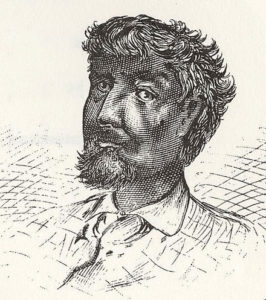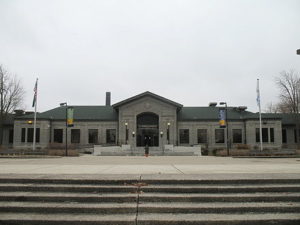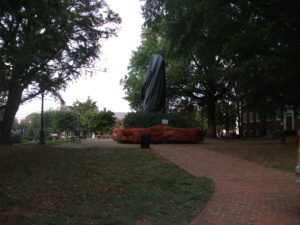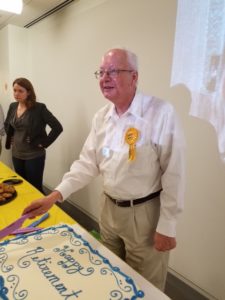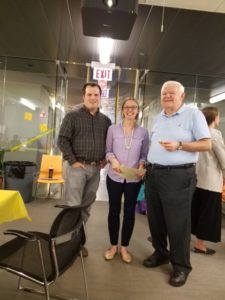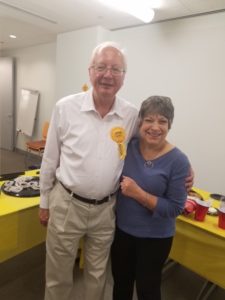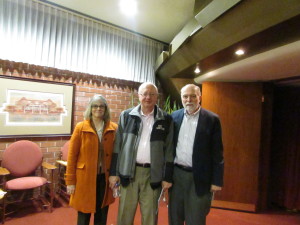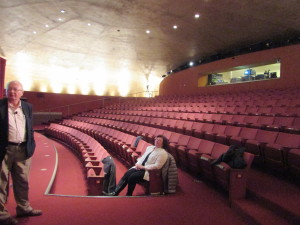As a New Year arrives, perhaps it was the gift-giving season and the story of Christmas that prompted this blog post. Or, perhaps, it was simply lurking in my subconscious mind, awaiting the appropriate opportunity to emerge into the light of conscious deliberation. These are not, of course, mutually exclusive possibilities. Almost any experienced writer can attest that ideas have a way of burrowing into our minds and fermenting through periodic reflection and creative thinking. This one, I confess, has had an especially long period of germination, but I am finally prepared to shape it and share it. (I have no apology for my mixed metaphors.)
In my twenties and early thirties, I traveled what I would now consider a rather tortuous route to finding a definitive purpose in life. Many people would not regard that as unusual. Finding a purpose is not easy, and it often evolves considerably. After bouncing through some unsatisfactory jobs, and then a very satisfying one that paid very modestly, I decided that my next move was to apply to graduate school, which led me into a double Master of Arts degree program in Journalism and Urban and Regional Planning at the University of Iowa, beginning in January 1982. Despite a mid-year entry into this customized arrangement (I learned I was the only UI student doing it), I gained a financial life raft when Professor John Fuller in the planning program offered a half-time research assistant position. Typically, these were offered only at the beginning of an academic year.
When I decided to return to school after more than a six-year gap, I was not sure what to expect or how to make ends meet. I had been told to expect lower entrance exam scores after such a hiatus from academia. I took the Graduate Record Exam (GRE) and ordered the transcripts and then patiently awaited the results, which back then took several weeks. One day, my notice arrived with the GRE scores: 740 Verbal, 680 Math, 660 Analytical. To me, it was like winning the trifecta for graduate admissions, much better than I had allowed myself to imagine. It apparently caught professorial attention, which helped prompt the offer. I have rarely shared these numbers since then, but they are relevant to this story. They were within the top one percent for those taking the test.
I have not shared those scores much over the past 36 years in part because I don’t think they prove much, certainly not as much as some people thought at the time. Yes, they show aptitude in those three categories, and particularly for verbal and math skills, my highest and the basics of the original GRE. But those are only partial ingredients for success in life. People can also have high aptitudes for music, have outstanding natural athletic talent, or in my father’s case, mechanical skills. Intelligence comes in many forms. Some people show amazing relational skills in dealing with other people, as is often the case with excellent teachers. The best politicians also have outstanding people skills, although often focused differently toward amassing power or achieving policy goals. My gifts, at least at that time, simply happened to be those that college admissions tests were designed to measure. But that at least promised a good start toward academic achievement, at least if I were willing to use those skills aggressively. Not everything was as easy as this might make it seem. There were times when I had to work very hard and fight for my grades. That was a good thing; it meant that I had to learn persistence, patience, and determination.
I have had and still have plenty of weak points, and I have had to learn how to exploit the strengths and shore up the shortcomings as needed, to use teamwork, and to spend my time and talents wisely. None of that was tested on the GRE, in my estimation. Tests are blunt instruments for self-assessment, and we often need sharper tools that are honed through experience. The most valuable experience, in turn, is often gained through courage and honesty and a willingness to test one’s limits. At times, experience breeds humility, which often becomes its own kind of strength.
In that first semester, however, those scores attracted the attention of Mensa, an international society designed to serve the needs of those deemed to be exceptionally bright, which invited me to join. The combined basic GRE score of 1420, I was told, automatically qualified me for membership in this exclusive club. Always willing to pursue options that might open doors, I accepted the invitation and attended some local meetings in Iowa City.
Any group that aims to include only those in the 99th percentile on IQ tests is not going to be huge, even in a college town. I don’t remember a meeting with more than maybe 20 people, but I won’t swear that my memory is entirely accurate. Given the transitory nature of university students at any level, the group was undoubtedly fluid from year to year. However, the entire group was noticeably lacking in faculty, or in anybody much beyond 30 years old, as I recall. Being what I now call a compulsive extrovert, I tried to engage my fellow Mensans in conversation. That was not hard. But I quickly learned that some lived at home with parents, not clear on what they wanted from life, and others had a disappointing sense of their own destiny. What they mainly seemed to share was an artificially generated awareness of being unusually intelligent. There may well have been other members who were too busy to attend, but those I met often seemed satisfied with this status without feeling any compelling obligation to any greater good.
At the few meetings I attended, that bothered me. It had not really occurred to me before that it was possible to let IQ scores feed a low-grade narcissism. In the blue-collar world from which I had emerged, achievement was everything, and aptitude was merely an advantage, albeit one that needed to be exploited. I was attracted to urban planning in part because one professor, Michael Sheehan, who knew of my environmental activism at local and state levels, suggested I apply because “we love people like you.” He convinced me that urban planning was a way to develop and apply skills that would produce the progressive change that had energized my life in recent years. In other words, he was promising that the program would help me fulfill my own sense of purpose. Yet, I was meeting people for whom mere proof of intellectual aptitude seemed sufficient to sustain their self-esteem. I have always felt that I needed to be contributing something. I did not always need to succeed, though that helps, because I could always learn a great deal from failure. Learning to overcome obstacles is only partly a function of intelligence, and mostly a function of grit and creativity.
That grit and creativity, seasoned with perspective and a sense of humor, has been the larger part of what led to the high points in my own career, which in my opinion are connected less with titles and positions than with outcomes, such as influencing the role of natural hazards in the urban planning profession, seeing students from my University of Iowa classes make a difference, and being able to move audiences because of the ideas I espouse and my ability to articulate them in a way that conveys genuine concern for others. Smug satisfaction that I was somehow smarter than other people would have smothered and strangled those accomplishments in their cradles.
It took only a few months for me to abandon those meetings and focus my precious time and energy on those goals, and on learning everything I could within the two programs that had adopted me. I bear no ill will toward Mensa; its membership undoubtedly has included some wonderful people. But my experience was that it fostered what I deemed some morally skewed priorities. The emphasis on the importance of high IQ breeds a sense that brilliant people need and deserve special attention that perhaps would be better focused on learning to help others instead. I also learned that helping others is an opportunity to learn from others, if undertaken in the right spirit. It is an opportunity to learn that most people in this world have some sort of gift that needs to be nurtured, whether or not it is recognized by some organization with lofty claims. My wife, for instance, like most teachers, has better gifts than I for relating to and working with children, some of whom have later attributed at least some part of their fondness for learning to their experience with her as their teacher. I lack musical skills, in part for lack of opportunity at an early age, but I can appreciate what others contribute to my life because of their talents. I never excelled athletically, but I have learned the value of physical fitness. I would never claim to be in the 99th percentile of moral leadership, but I am a better person for knowing those who are, or for reading about the examples of the Rev. Dr. Martin Luther King, Nelson Mandela, Mother Theresa, and Mohandas Gandhi, among many others. I could go on in this vein, but I suspect you get the idea.
My bottom line is this: Either you contribute something meaningful to the greater good of humanity, or you don’t. It need not even be noticed by anyone important. It can just matter to the people who benefit. Not everything is about who is the smartest, the swiftest, the strongest, or the most talented. You can move the needle ever so modestly, ever so slowly, but move the needle. And trust that your contribution matters.
Jim Schwab


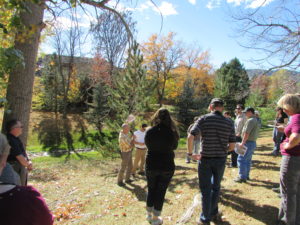

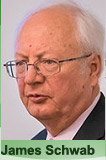 Sustainable City Network will host a 4-hour online course Aug. 21 and 22 for anyone responsible for initiatives related to resilience and disaster recovery planning. In the first 2-hour session, we’ll review the overall concept of recovery planning and the need for widespread involvement by various sectors of the community. The second segment will walk participants through information gathering, assessing the scale and spectrum of the disaster, and how to involve the public in meaningful long-term recovery planning. Instructor James Schwab, FAICP, is a planning consultant, public speaker and author who has taught since 2008 as adjunct assistant professor in the University of Iowa School of Urban and Regional Planning, with a master’s course on “Planning for Disaster Mitigation and Recovery.” Attend live or via on-demand video. Cost is $286 when purchased by Aug. 3.
Sustainable City Network will host a 4-hour online course Aug. 21 and 22 for anyone responsible for initiatives related to resilience and disaster recovery planning. In the first 2-hour session, we’ll review the overall concept of recovery planning and the need for widespread involvement by various sectors of the community. The second segment will walk participants through information gathering, assessing the scale and spectrum of the disaster, and how to involve the public in meaningful long-term recovery planning. Instructor James Schwab, FAICP, is a planning consultant, public speaker and author who has taught since 2008 as adjunct assistant professor in the University of Iowa School of Urban and Regional Planning, with a master’s course on “Planning for Disaster Mitigation and Recovery.” Attend live or via on-demand video. Cost is $286 when purchased by Aug. 3.
